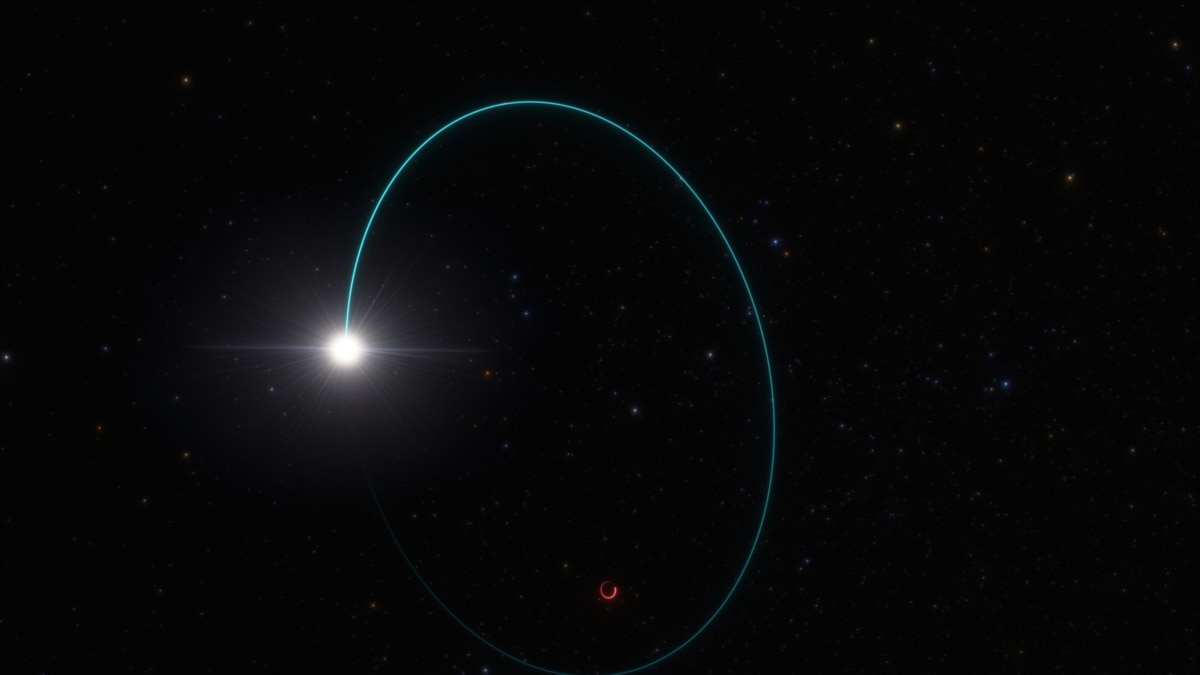Astronomers have discovered a black hole with a mass about 33 times the mass of the sun. It is the second known black hole in the Milky Way. Only the supermassive black hole at the center of the Milky Way is larger.
A new study in the journal Astronomy & Astrophysics says the newly discovered black hole is about 2,000 light-years away from Earth. One light year is about 9.5 trillion kilometers.
This black hole is located in the constellation Aquila and has companion Stars orbit it, researchers said Tuesday.
Black holes are extremely dense objects. Their gravitational pull is so strong that not even light can escape, making them difficult to find.European Space Agency’s Gaia mission Black holes were discovered. Gaia is conducting a massive star count.
Scientists discover black hole leads to companion star shake. Data from the European Southern Observatory’s Very Large Telescope in Chile and other ground-based observatories confirmed the black hole’s mass.
“This black hole is not only very massive, but also very large strange“, said Pasquale Panuzzo, a research engineer at the French research institute CNRS and lead author of the study.
For example, a black hole named Gaia BH3 and its companion star orbit within the Milky Way in the opposite direction to the orbits stars normally orbit in the Milky Way.
Researchers say Gaia BH3 may have formed after a star 40 times larger than the sun went supernova or died explosively.
Black holes created by the collapse of a single star are called stellar black holes. Gaia BH3 is the largest known stellar black hole, said Tsevi Mazeh, an astronomer at Tel Aviv University in Israel and study co-author.
Stellar black holes are small compared to the supermassive black holes at the centers of most galaxies. Sagittarius A* is the supermassive black hole at the center of the Milky Way. It is 4 million times more massive than the Sun and is about 26,000 light-years away from Earth.
Gaia BH3 ancestor Stars are made almost entirely of hydrogen and helium.Stars in the early universe had similar chemical compositions Formation, called low metallicity. This ancestral star formed very early in the history of the universe, perhaps two billion years after the Big Bang. When it explodes at the end of its life, it releases material into space. The wreckage collapsed violently, forming a black hole.
Panuzzo said the discovery of Gaia’s BH3 supports models of stellar evolution showing that massive stellar black holes can only be produced by low-metallicity stars like this parent star.
The companion star of Gaia BH3 is approximately 76% of the mass of the Sun. It’s a little colder, but about 10 times brighter.
The distance between the Earth and the Sun is called an astronomical unit (AU). Gaia BH3’s companion star orbits the black hole at distances ranging from 4.5 AU to 29 AU. By comparison, Jupiter orbits about 5 AU from the Sun, and Neptune orbits about 30 AU from the Sun.
Elisabetta Caffau is an astronomer at the Paris Observatory and co-author of the study. She said she was surprised that the companion star didn’t show anything special in its chemical composition, so it wasn’t affected by the black hole’s supernova explosion.
Scientists aren’t sure exactly how big stellar black holes are.
“this maximum The mass of stellar black holes is a matter of active scientific debate,” Panuzzo said.
I’m Dan Novak.
Dan Novak adapted this story for VOA Learning English, based on a Reuters report.
__________________________________________________
words from this story
companion noun A person or animal that you spend time with or enjoy being around
mission noun a task or job that someone is given to do
shake v. Moving in an erratic side-to-side motion
strange adjective unusual or unusual
ancestor noun something that begins to develop other things
maximum noun the highest amount or amount possible or allowed
#largest #black #hole #Milky #discovered
Image Source : learningenglish.voanews.com
